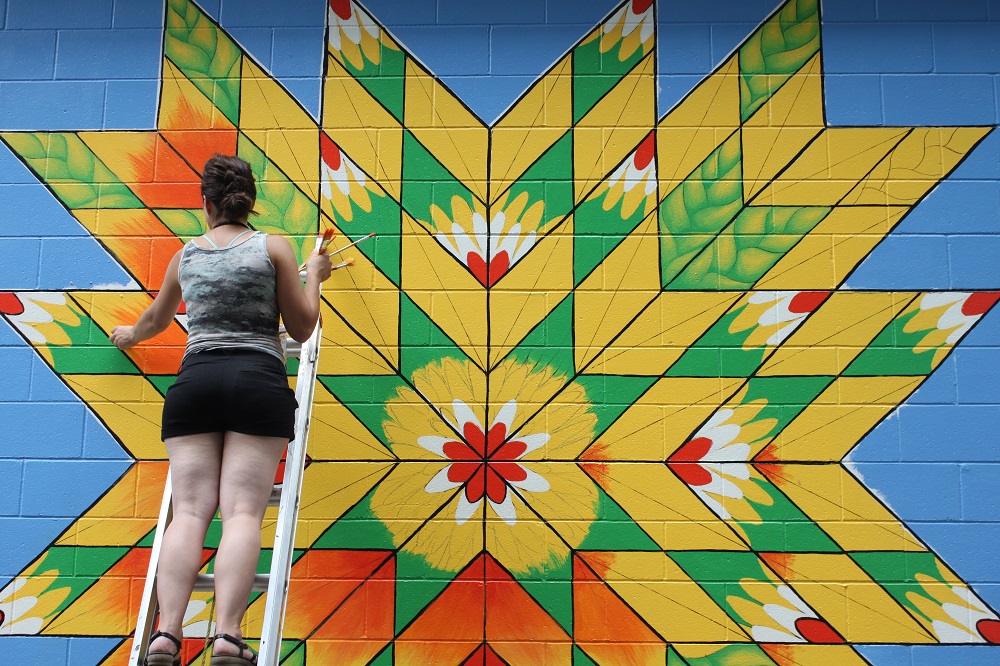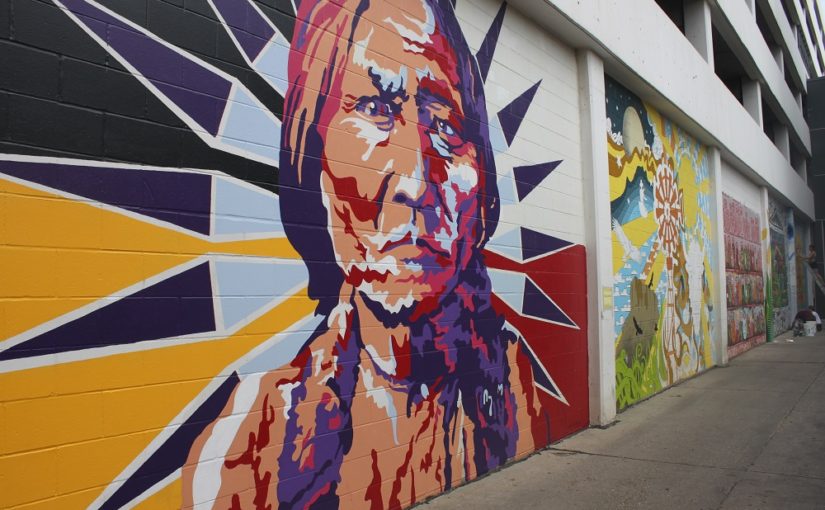Usually it goes by in a flash — streaks of paint on the side of a train, or a stamp on a wall as you drive past.
Sometimes it’s tucked behind the Forum Communications building in downtown Fargo or wedged between a pizza parlor and drug store in Bismarck.
But it’s always something interesting to look at.
Since its birth in 1969 New York, graffiti has a conflicting history as both an art form and a nuisance.

Many artists and onlookers consider it a unique expression of self, open to people from all backgrounds and available in every city across the globe. It’s a way for art to be seen without the need for an art gallery and wealthy sponsors.
But just as many think it’s vandalism, a pull on public funds to an unworthy cause.
An estimated $15 to $18 billion dollars is used per year to monitor, detect, remove and repair graffiti damage across the U.S., according to a USA Today article.
It’s no wonder in North Dakota alone the fine for vandalism ranges from $1,000 to $10,000 dollars combined with a 30-day to 10-year stay in jail.
Yet the heavy price street artists can pay hardly discourages a need to paint the town in swaths of colors. Despite laws prohibiting its creation, discouragement from community leaders and heavy fines, graffiti still decorates the sides of buildings, cable boxes and passing trains.
So, what do you do when its expensive to remove and you can’t stop it from being made?
Well, you just … let it happen.
Rather than increasing city patrols or funneling thousands to millions to billions of dollars into removing it, cities have begun to embrace their graffiti.
Last year, Fargo dedicated two walls on the Forum Communications building to lawful street art.
Artists from the Fargo community christened the wall in October by painting intricate murals along the building. Then, the rest was left to the citizens of Fargo.
The wall rules can be broken down to the following:
- Everyone is welcome to paint the wall
- Stay within the lines and space for the art
- Take pictures — nothing lasts forever
Now, only the remains of those original monolithic murals can be seen peaking out from behind the additions of the local scene of street artists who have added their own flare to the Forum walls.
Fargo isn’t the only city within North Dakota to recognize and take advantage of this trend.
Bismarck has also given space to its local artists to paint separate yet neighboring images inside an alley off 5th street downtown.
Side-by-side, elaborate murals extend down the belly of the alley.
Each represents something unique about North Dakota: the stern and powerful Sitting Bull, a medley of jars stacked high on their shelves, a colorful North Dakota surrounded by its icons, an elaborate Western meadowlark and even more.
All this funded by the Dakota West Arts Council to celebrate the color and culture of life in North Dakota.
By the end, the Council predicts nearly 50 artists will have added their own spin to the art alley.
While more refined than Fargo, Bismarck’s art wall has the same premise: space for artists to create individual, unique public masterpieces.
Slowly, artists are being given room to (legally) graffiti public spaces — Fargo and Bismarck are only a few of the places where it’s legal to paint streets.
Rapid City, South Dakota’s Art Alley has been a creative epicenter for local artists since 2005.
The Venice Graffiti Pit has colored Venice Beach, California for years before that.
5 Pointz, a graffiti mecca, covers a full city block in Queens, New York.
Legal art spaces can never detract from graffiti’s rowdy and illegal core, where joy comes from not only elaborately decking out public spaces but also from running from law enforcement.
But when its artists collaborate to bring their unconventional art form into public light, it can become an incredible masterpiece.
